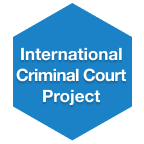Kenya
The Situation in Kenya involves mass violence and accompanying atrocities that occurred after the country’s contested 2007-2008 election. The violence spread across six of the eight Kenyan provinces: Nairobi, North Rift Valley, Central Rift Valley, South Rift Valley, Nyanza Province and Western Province. Following the announcement of the re-election of President Mwai Kibaki, supporters of the opposition candidate, Raila Odinga, rejected the declared election results and accused the government and the President of electoral fraud. A series of protests and demonstrations devolved into post-election violence, mainly perpetrated between two tribes: that of Kibaki, the Kikuyu, and that of Odinga, the Luo. The violence resulted in over 1,100 deaths, over 3,500 injuries, 900 acts of documented rape and sexual violence, and up to 500,000 forcibly displaced persons.
Kenya ratified the Rome Statute on March 15, 2005. The Office of the Prosecutor (OTP) of the International Criminal Court (ICC) initiated a proprio motu investigation on November 26, 2009, which was later authorized by the ICC’s Pre-Trial Chamber II on March 31, 2010. Within the Situation in Kenya, there are the following cases: Prosecutor v. Paul Gicheru and Philip Kipkoech Bett, The Prosecutor v. William Samoei Ruto and Joshua Arap Sang, The Prosecutor v. Uhuru Muigai Kenyatta and The Prosecutor v. Walter Osapiri Barasa.
For more information on the Situation in Kenya, please visit the ICC page.


